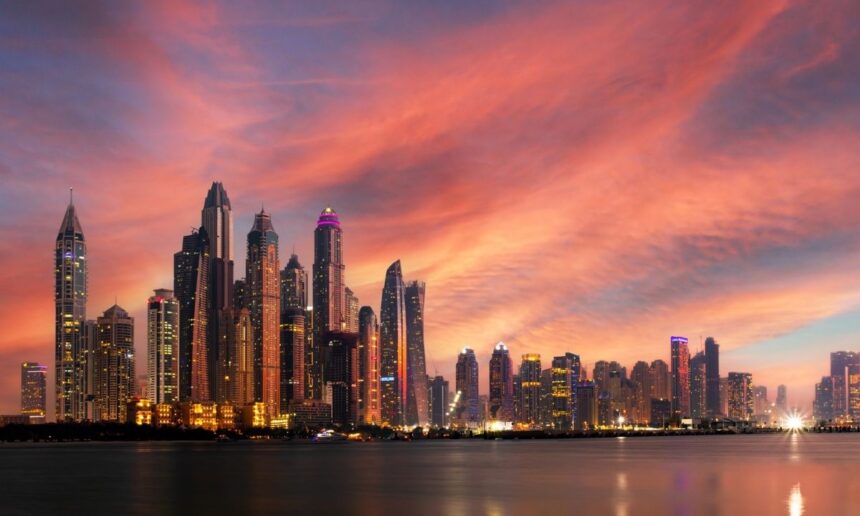Dubai’s real estate sector has consistently outperformed expectations over the past three years. But with rising global tariffs, weakening oil prices, and economic uncertainty in key markets, is the city’s property boom still sustainable in 2025? In this blog, we explore the drivers behind the current momentum, assess the risks ahead, and explain why the sector appears more resilient than in previous cycles.
Unpacking the Momentum
Dubai’s real estate surge is powered by strong population growth, economic reforms, foreign capital inflows, and a favorable macroeconomic backdrop. In 2024 alone:
- Primary market sales hit AED 275 billion (~USD 74 billion), a 6.5x increase over five years
- Residential transactions rose 39% year-on-year
- Home prices grew by 18%, surpassing the 2014 peak
- Rents climbed 16%, reflecting tightening supply
Meanwhile, UAE real estate bonds have returned 21% since 2020, outperforming emerging market benchmarks by 11%—a testament to the sector’s strengthened fundamentals.
Why Growth Persists in 2025
Dubai’s 2025 outlook remains robust, supported by three major catalysts:
- Economic Diversification & Foreign Investment
The UAE’s entry into BRICS, the rollout of multiple CEPAs, and the IPO Accelerator Program are attracting strategic investments in manufacturing, finance, tech, and trade. The country also ranked 11th globally in FDI inflows in 2023, with USD 31 billion, thanks to its business-friendly climate. - Demographic Expansion
Dubai’s population reached 3.8 million in 2024 and is projected to surpass 4 million by 2026. Urban planning initiatives aim for 5.8 million by 2040, underpinned by visa reforms (Golden Visa, 10-year residency), workforce inflows, and high-net-worth migration. In 2024 alone, Dubai added 6,700 new millionaires—more than any other global city. - Strong Public Spending and Fiscal Resilience
A record AED 272 billion federal budget for 2025–2027, with 46% allocated to infrastructure, will stimulate real estate-linked sectors. With a low fiscal breakeven oil price (~USD 55/barrel) and minimal public debt, the UAE is well-insulated from external oil shocks.
What Could Go Wrong? Three Risks to Monitor
Despite the momentum, investors must be aware of three critical downside risks:
1. Global Economic Slowdown & Tight Financial Conditions
Past cycles show that 55–65% of Dubai’s buyers are foreign investors. While diversification (e.g., UK, China, India) adds stability, tighter global liquidity or weak growth could still dampen demand. That said, stable FX rates and attractive gross yields (5–7%) continue to support investor interest.
2. Sustained Low Oil Prices
While UAE’s fiscal position is strong, prolonged oil prices below the breakeven level (~USD 54) could weigh on liquidity and credit availability across the GCC. Brent is expected to average USD 65 in 2025, which remains safe but could trend lower. Developers may face secondary exposure through investor sentiment or regional credit tightening.
3. Oversupply Risks
Over 220,000 units were launched in 2023–2024, with over 300,000 now under construction—equivalent to the previous decade’s deliveries. However, demand remains strong, and only ~60% of planned projects are historically delivered on schedule. Developers are also phasing handovers and focusing on end-user and rental demand absorption to prevent a glut.
Why This Cycle is Different
Unlike past boom-bust periods, Dubai’s market today is far more disciplined and structurally sound. Key differences include:
- Stronger Regulatory Oversight: Escrow accounts, milestone-linked disbursements, and tighter mortgage caps reduce speculation
- Healthier Developer Financials: Record presales (AED 123 billion unrecognized revenue), high liquidity, and lower leverage levels improve earnings visibility
- Macro Policy Alignment: Vision-led initiatives like the Dubai 2040 Urban Master Plan, Dubai Real Estate Strategy 2033, and D33 Agenda reinforce economic and real estate alignment
- Long-Term Residency and Workforce Stability: Expanded visa programs and talent-focused reforms enhance sustainability in population and demand
Conclusion: A Moderated But Resilient Outlook
Transaction volumes in early 2025 are already up 23% YoY, with values rising 29%. Although a global slowdown may temper activity in the medium term, Dubai’s structural reforms, economic diversification, and strong developer balance sheets suggest that any correction will likely be cyclical—not systemic.
Dubai remains an oasis of real estate opportunity. For investors, the key is to watch external macro shifts closely while staying grounded in the evolving fundamentals of a maturing market.





